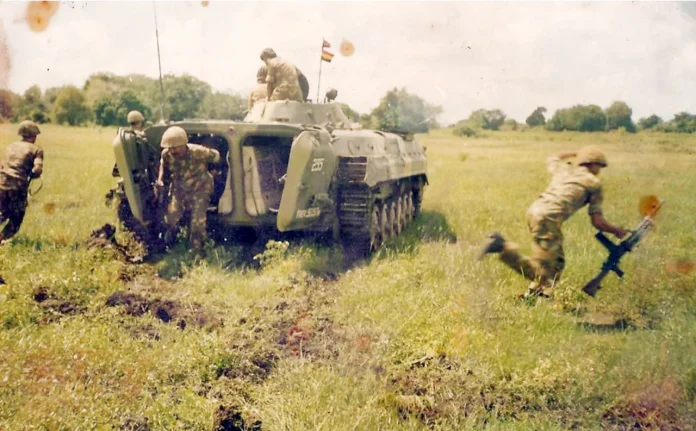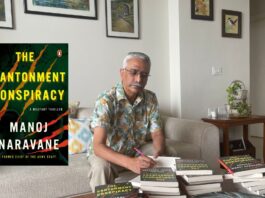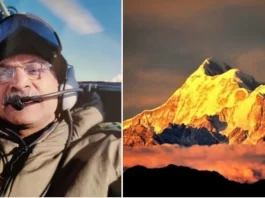It was a dirty war. The Force was inducted for Peace Keeping. It soon turned into Peace Enforcing, and all hell broke loose. We had no enemy; rather, everyone, including women and children, seemed to be against us. Political leaders, Diplomats, Intelligence Officials and Civil Administrators, everyone and anyone seemed to be in the fray. Naturally, the members of the Armed Forces who were braving the rough times were the last in the pecking order of priority.
It is in view of the circumstances when a lot has been written and analysed by intellectuals this article confines itself to mundane issues at the Infantry Battalion level. Though basic, lessons learnt in OP PAWAN were of great import at the unit level.
The Introspection
On deinduction from OP Pawan in May 1989, it was decided to introspect on lessons learnt and find ways to improve for the future. Several brain-storming lessons, in which all appointments and, at times, even some jawans attended, contribute.
The lessons learnt stemmed from the experience on the Island. The incidents /operations are briefly enumerated to explain the rationale of the lesson learnt. Only the important incidents are being highlighted, and the lessons obtained thereof.
Nedunkeni Operations: 14 to 22 Jan 88
The Battalion, minus two companies, was placed under the command of the Infantry Brigade located at Mullaitivu. The Commander arrived by helicopter at the Battalion location to personally brief the Commanding Officer.
The plan entailed a Battalion less two companies to establish company-level stops South and South West of Nedunkeni astride the roads Nedunkeni-due South and Nedunkeni-Puliyankulam. A battalion ex-Oddusudan was to advance from the North and undertake search operations in Nedunkeni.
The village of Nainamadu lies midway between Puliyankulan-Nedunkeni. Nainamadu was notorious as a stronghold of LTTE as Mahatya’s (the deputy to LTTE’s supremo) girlfriend was rumoured to belong to this village. 4/5 GR had suffered heavy casualties near this village while operating in this area. Therefore, it was decided to avoid this village altogether.
Every time an IPKF column left the post, it was reported by the LTTE informers on the radio regarding the time, direction and strength of the party. The EW Det also intercepted this co-located with the post.
To retain surprise, it was decided to take off at 0200h on 14 Jan 88. The column struck West from Puliyankulam.
After a reasonable distance, we took a U-turn and, from South of Puliyankulam, entered the forested area East of the Road Puliyankulan-Vavuniya. Here, a harbour was established before daybreak.
At last light, the column again moved cross-country towards the East. The going was tough as the forest was dense, and one had to hack the way through literally. The progress was excruciatingly slow and tiring. Just before daybreak, the Commanding Officer asked the leading Company Commander to establish a harbour. As per the calculation, the column should have reached a point due South of the planned Road Block site, on the road Nadunkeni-Puliyankulam and approximately 5 kilometres SE of Nedunkeni.
At daybreak, to the horror of all commanders, it was found that the forest cover ended barely 300 yards from the outer rim of the harbour. Across the field, to the distant North, a village was seen. Some quick map reading from the photocopied maps could not make them any wiser. Finally, a Patrol was sent out to find out about the village.
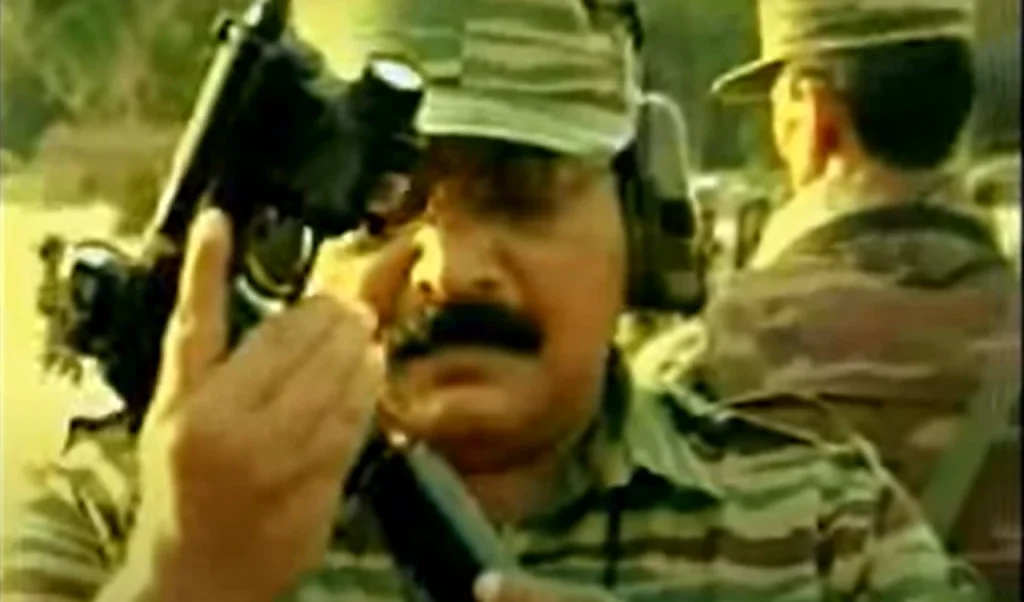
Meanwhile, the Officer manning the Puliyankulam Post called on the radio to inform that the column was two kilometres South of Nainamadu, the village to be avoided! So much for the ‘night navigation’. He also assured the column that, per his information, all the LTTE cadres in the village of Nainamadu had moved to Nedunkeni in a tractor trolley and were to be deployed along the Southern approach to the town.
In the absence of inputs from the EW Det, when moving out of Puliyankulam (a normal occurrence), one felt that the move was well concealed. Apparently, the column being tailed, the LTTE assessed that it was headed South of Nedunkeni.
The lesson learnt from this incident was that in the Jungles, especially when hacking one’s way through, the Navigation party has to be very alert to minor drifts, which could lead to total disorientation. The basics of ‘navigation by night’ as taught and practised during training cannot be ignored. Thus, the lesson learnt was that the basics in training cannot be given a go-by.
On the sidelines, the Officer at Puliyankulam, during the interrogation of the apprehended, also came to know that he had been sent on a reconnaissance mission to assess the strength left behind in Puliyankulam. They had a plan to raid the camp. The Officer managed to get the raiding party’s details and location. A section worth under his command surprised the raiding party of four, who were taking lunch in a hut near Kovaladi village. They also recovered two T-56 Rifles, magazines and ammunition, grenades and a mine initiating device.
LTTE Raid on Puliyankulam: 6 Feb 88
Puliyankulam post was sited astride the Railway line and the Road Vavuniya-Jaffna. The Northern perimeter of the Force almost rested on the village of Puliyankulam. This post also housed the Battalion Headquarters.
At around 2100 hours on 6 Feb 88, the sentry near the railway line observed suspicious movement. On challenging, he was responded to by a burst of AK fire. This was the signal for the actual raiding party to proceed. They fired Rocket Launcher rounds and automatic weapons at the bunker along the road. Simultaneously, a party went to a house adjoining the post where five PLOTE boys were sleeping for the night, broke the window pane and fired a couple of bursts into the room.
The troops reacted very fast. The Platoon nearest the target house surrounded the house, and the raiding party, which was also tasked to locate a Pistol, reportedly with the PLOTE boys, had to withdraw without a search. The raiding party quickly disengaged and withdrew. Their leader ‘Mohan’, who was also Commando Group Commander of the area, was wounded and had to be carried back on a makeshift stretcher. Apparently, he was wounded by shrapnel of a 2″ mortar bomb fired by this Platoon along the likely withdrawal route. This information about Mohan being wounded was obtained through the EW Detachment co-located with the Brigade Headquarters in Vavuniya.
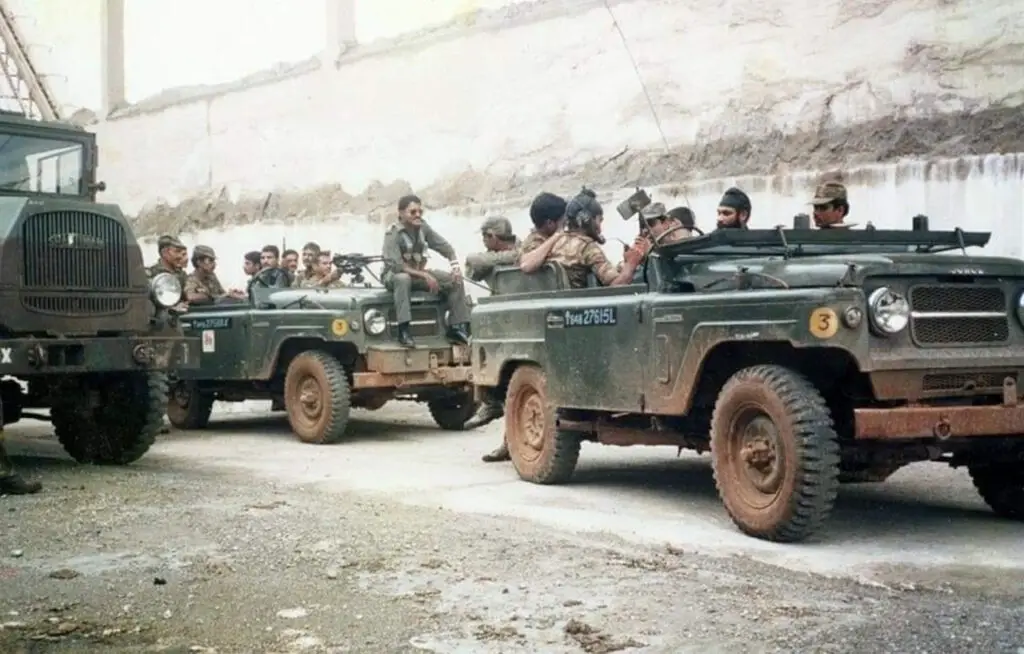
The RMO quickly reached the target house and attended to the wounded PLOTE boys. They were evacuated in the morning but succumbed to their injuries while treated in Vavuniya.
A QRT each on both the flanks reacted swiftly by swinging in from East and West and apprehended six LTTE cadres who were accompanying the raiding party, though none of them bore arms.
All troops manning the post around the camp started firing when the raid was mounted. Especially the troops along the Northern perimeter. This reaction created confusion, and one could not discern the point of attack. The QRTs of the companies, too, took a while before swinging out due to a need for more clarity. Albeit, the Platoon nearest the target house reacted swiftly, forcing the raiding party to disengage and withdraw.
The next morning, on examining the entire area, it was realised that the troops along the Northern perimeter had fired the maximum number of rounds, and there was not even a single bullet mark on a mud wall (approximately 10 feet high and 35 yards away) along which the troops claimed to have seen some movement of suspected LTTE personnel. That drove home the point that the “Ek Goli, Ek Dushman” (one bullet, one enemy) principle needs to be strictly implemented.
The other rationale their own troops gave was that “Jawabi Fire kar rahe the” (were returning fire). Again, it had to be drilled in that there was no such term as “Jawabi Fire” (return fire). When a weapon is fired, it has to be effective unless it is a “speculative fire” with a purpose.
The Fire control that we managed to enforce did help the unit to acquire better results in all subsequent operations. Strict fire discipline also created an aura around the unit, and the LTTE avoided engaging us in the Vavuniya Sector and, later, even in the Trincomalee Sector. Resultantly, no untoward severe incidents occurred during various operations undertaken throughout the tenure.
Chance Encounter: 9 Apr 88
While deployed in the Vavuniya Sector, the Battalion was tasked with Rail-Road Opening, a task on which the unit would be employed almost on an alternate day basis. On one such occasion, the Company Commander at Omantai was required to stay back at the Battalion headquarters at Puliyankulam for the day to complete some documentation.
The next day, he wanted to get back to Omantai, and since there was no road/rail opening that day, he asked for a section to come up to the mid-point and escort him back to Omantai. Waiting for the escort for a while before marching off from Pulliyankulam under an escort from the Battalion Headquarters, he called the escort on the Radio Set and learned that they were still in Omantai. He ordered them to hurry up.
In actuality, the Escort Commander, a senior NCO, wanted to use one of the civilian vehicles going up North. Usually, civilian vehicles would ply in the absence of our road opening days. Somehow at that point in time, no civilian vehicles were plying, and whatever few vehicles were going North were fully loaded. Having been told to hurry up, they finally managed to get into a truck carrying diesel barrels. The Commander and the LMG No 1 perched themselves on top of the driver’s cabin while the members got into the truck’s body and crouched as the space between the barrels and the roof was inadequate to sit upright.
As the truck reached Panikkaniravi, mid-way to Puliyankulam, the Commander spotted a militant talking to some locals at the road junction. The militant was apparently surprised as they had not expected any IPKF coming that way on a non-convoy day. The NCO reacted swiftly and fired a burst from the LMG from the hip. The militant fired back from behind a tree and disappeared.
The truck came to a halt, and the escort dismounted; a young jawan jumped out in the wrong direction while the vehicle was still moving. Thus, he fell flat with his head hitting the road and lay unconscious. The others scrambled out and deployed themselves, not knowing the situation. The NCO called for the RL to fire toward the tree and a road branching off the main road. The RL was still in the body of the truck. The nearest jawan to the truck was ordered to fetch it. He brought it down but declared he did not know how to fire an RL! He was a recruit who had just arrived from the Regimental Centre. Another senior jawan took charge and got a round loaded and, without calling out ‘stand-by’, fired the round. It resulted in the young jawan’s eardrums bursting.
As the leader, the militant gave a pep talk to the villagers. They had collected their day’s requirements from the trucks, which were plying early in the morning, and the leader was waiting for the stuff to be loaded on the tractor-trolley, which was parked beyond the tree. It was learnt through the intercepts that the leader of the raiding party was wounded by the LMG burst. Own EW Detachment reported that the wounded militant succumbed to his injuries. Two other LTTE members were injured trying to board the Tractor Trolley quickly. The tractor-trolley was positioned to transport the items looted from the civil trucks.
The lesson learnt from this episode was that all platoon members should know the use of all weapons in the Platoon. The senior jawans should know the basics of all weapons which are usually deployed in the company-defended area.
The Failed Ambush
It was again in Vavuniya Sector that information was received that LTTE cadres regularly take a route to the outskirts of a village for replenishments and return to their camp along the same route. There was a platoon post under a JCO deployed nearby. It was decided to ambush the party. To maintain surprise, it was decided neither to reinforce the post nor locate an Officer as the post commander. However, a QRT from the nearest Company would be ready to assist the ambush party if required.
To inflict maximum damage on the administrative column, it was decided to spring the ambush (a la’ LTTE style) with claymore mines.
The ambush was laid accordingly. A Senior NCO was briefed by the JCO and handed over the ‘trigger’ of the chain of Claymore mines. Unfortunately, he actuated the mines prematurely. The column had not entered the killing zone, and thus, they escaped.
While debriefing, it was revealed that the NCO was entrusted the ‘trigger’ since he was ‘course qualified’. This brought home the lesson that Commanders need to know the characteristics of their subordinates besides their professional achievements.
Since this was an unsuccessful operation, unfortunately, it has not been mentioned in the after-action report or the war diary. However, this aspect of the lesson had an important bearing on the training structure undertaken on the mainland.
Reporting to the Next Higher Commanders
Training and drills in the Army ordain that all incidents should be reported to the next higher Commander immediately upon occurrence. This incident pertains to the Trincomalee Sector.
During daylight hours, A blast occurred in the neighbouring Battalion area, South of our Brigade Sector. A firing party of the militants was seen escaping from near the site towards the East. On receiving the information, a couple of ‘stops’ were deployed along the appreciated withdrawal routes.
One such party, led by an NCO, was en route to the position selected. This party saw the militants crossing the main road to the East. Since they were beyond the effective range to engage, the party tried to inform the Company Commander. The radio set with the party (VM25A) could not communicate with the Company Commander. Therefore, instead of maintaining contact with the escaping militants, the party retraced its steps till communication was restored.
An analysis of this incident highlighted that our training lays down that any untoward incident(s) should be reported immediately to the next higher Commander as one of the most important actions to be taken by the Commander on the spot. Thereby, it forecloses any initiative by the soldier/commander at the scene of action. This shortcoming needs to be rectified in all operational environments.

The Analysis
On reaching the mainland, we discussed these events and examined the militants’ modus operandi. We thus distilled the major issues to be taken care of during training. On the mainland, we were tasked with conventional operations in the plains, which was different from what we had been through. So, the training had to be tailored to suit the operational requirement.
The opinion was unanimous regarding the adversary’s modus operandi and our shortcomings.
(a) The LTTE operated as a well-knit team. It is understood that they would discuss the plan ad-nauseum, including the role of each individual and the unarmed reserves (who took up the fallen comrade’s weapon).
(b) Their numbers and limited resources imposed upon them the need for good and effective fire discipline. Every reserve member was trained to handle various weapons that he would likely operate in case a main team member became a casualty. They did have a large and varied inventory of weapon systems with them.
(c) The requirement of every soldier to develop confidence in the weapon issued to him was critical. That included correct zeroing and effective use of weapons during day/night. The manner in which the Battalion was inducted into the Island precluded the classic method of preparation for war. Hence, the importance of keeping the weapons ‘zeroed’ at all times.
(d) The need for all members of the Platoon to be familiar with the operation of all Battalion weapons and equipment that are usually deployed in a company locality. Rudimentary knowledge of such support systems was considered adequate.
(e) The importance of the commanders knowing the characteristics/temperament of every man was a prerequisite for the correct and effective employment of individuals.
(f) Basic drills in field craft, weapon handling, and navigation needed to be constantly practised.
(g) Commanders at all levels need to utilise initiative, considering the overall (Battalion Commander’s) directive/plan.
Keeping the above in mind, the training methodology was restructured. All training activities were carried out with the personal weapon as issued to an individual. Besides, once a week, they were programmed to negotiate the obstacle course in battle dress, followed by a fieldcraft exercise which ended at the short range. Here, every individual would fire a group of five rounds with their personal weapons. Zeroing, if required, was carried out. Similarly, five rounds were fired at night on the same day.
On other days, the training was carried out in Sections, irrespective of the strength present. Section Commanders or the officiating incumbent was responsible for conducting the lessons as per the training programme. In turn, these incumbents were coached by the ‘Training Team’ an afternoon before the training schedule. The incumbent was at liberty to nominate another jawan within the section to take a class on a specialised subject in case he was trained in that subject. Certain subjects had to be carried out centrally, i.e., Platoon/Company wise, but the same principle was adhered to.
Fortunately, the Brigade Commander approved the concept and design of the training, though the Training Directive had suggested a centralised Training Company Cycle with a panel of instructors.
This adopted methodology of training produced extremely good results. The jawans developed greater confidence in themselves and in employing their personal weapons. They also acquired intimate knowledge of their platoon and section colleagues. All these factors combined to generate tremendous team spirit, which became evident in whichever sector/formation the Battalion was deployed subsequently.
Some Reflections
Honours and Awards
It was seen that the gestation period for the recommended cases for awards was rather large. The effect of the award in terms of motivation was thus lost. It was felt that the Commanding Officer needs to be empowered to decide on some incentive on the spot. The ‘Promotion Rules’ of the Battalion came to our rescue. The Rules clearly stated that an ‘out of turn or accelerated promotion’ could be granted to an individual whose performance on the battlefield was inspirational. The other criteria for excelling in professional courses/sports/games etc. were listed after that. Taking advantage of this clause, several deserving cases were granted this advantage. Though, in some cases, they were doubly rewarded, which had to be accepted.
Unfortunately, it is understood that at the turn of the century, these powers of the Commanding Officer of an Infantry Battalion have been curtailed, and the promotion list is maintained by the Record Offices, who are guided strictly by a seniority roster.
Rear at Chennai/Vavuniya/Trincomalee
To ensure that a jawan travels light when he proceeds on leave, it was ensured that the ‘Rear’ at the places mentioned above was duly equipped to take care of all ranks while in transit by providing a mosquito net and light bedding. Sometimes, the men had to wait for a couple of days at a stretch to be rostered on the ship or flight or even for reservation on the train. This gesture was much appreciated by all ranks and helped raise morale.
Intelligence at Battalion Level
The flow of Intelligence at the functional level could have been better in the initial stages. The EW Dets were placed within the important posts and were the first to inform their own troops of the LTTE activities. This level of competence was acquired after much trial and error as the LTTE would use codes. The EW Detachments effectively understood these codes after almost one year of having operated in that environment. Being almost real-time information about the immediate operational area, the post commander could initiate prompt and successful action.
The availability of proper maps, too, was a big issue. It took almost a year for the troops to be supplied with proper maps of the area of operation.
Language was a big problem. Though we had men from Madras Sappers and of the Signal Regiment attached to the units, they had a primary role to discharge. Besides, they could not be expected to be everywhere. Subsequently, when some elements from Madras Regiment were attached, the problem was mitigated to quite an extent.
Coordination
Coordination at the functional level at times was wanting. A very humourous incident took place in May 1988. GOC 4 Infantry Division visited the Battalion headquarters location at Puliyankulam to address the troops since the Battalion was moving out to Trincomalee as part of the 72 Infantry Brigade under the 36 Infantry Division. Having addressed the troops, he went to the Railway Platform (The Battalion Headquarters was located in the Railway Station building) for a cup of tea. The Commanding Officer informed the GOC that it was fortunate that there was no road or rail opening that day. Resultantly, such strength could be mustered for the sainik sammelan (Soldiers Gathering). This statement was just about made when a train steamed past. Everyone was surprised as there was no word of the movement for that day. With plenty of red faces around, the GOC made light of the incident by saying, “Now that my sammelan is over, the troops can go and secure the rail line for the train to return from Jaffna”.
Conclusion
The Battalion was moved thrice – Batticaloa, Vavuniya, and Trincomalee. Every sector required a reorientation of troops and changes in the operating procedures. Lessons learnt during the operations, both by us and by IPKF in the other sectors of the Island, were incorporated immediately, and operating procedures were suitably amended, but some aspects had to wait till the Battalion got de-inducted.
The Battalion did suffer casualties, with 1:1:15 as killed in action and 0:0:31 wounded. Despite the casualties, no weapons were lost. On the other hand, militants killed were 41 and 281 were apprehended, recovering 14 weapons, 99 IEDs, assorted ammunition and other war-like material. Carrying out an overall assessment, the performance of the Battalion was commendable.
The above is based on the experiences of an Infantry Battalion. Other units may have some more lessons to be added to this. It may be worthwhile to cull out the lessons as almost all pertain to Section, Platoon or Company level, which is the operational norm in any CI environment.
The article first appeared in the book ‘.Resurrecting the IPKF’ by Atul Kochhar and BR Nair, Notion Press.
